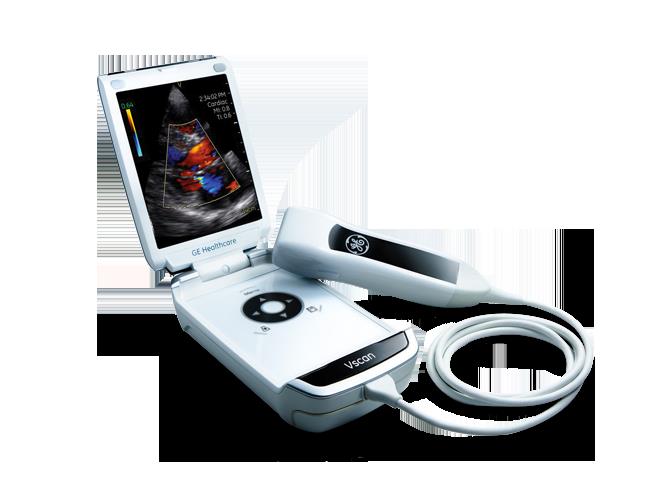Handheld Ultrasound Technology Used to Help Medical Students Optimize Diagnoses
By MedImaging International staff writers
Posted on 30 Nov 2014
New research has revealed that training medical students to use a handheld ultrasound device can enhance the accuracy of their physical diagnosis. Posted on 30 Nov 2014
The study’s findings were presented at the American Heart Association’s Scientific Sessions 2014, held in Chicago (IL, USA), November 15–19. The study, conducted by Icahn School of Medicine at Mount Sinai (New York, NY, USA) investigators, included a 90-minute, customized lesson for 64 second-year medical students in how to use handheld echocardiography technology, with a review of a three-dimensional (3D) cardiac anatomy model, video images of normal echocardiograms, and the opportunity to test the handheld device on classmates.

Image: The Vscan handheld ultrasound device by GE Healthcare (Photo courtesy of GE Healthcare).
The study’s objective was to assess an entire medical student class and see if a group of novice medical students given this training could employ the technology effectively to achieve more accurate diagnosis of valvular heart disease than 72 of their colleagues who received only standard instruction in how to review medical histories and analyze heart murmur sounds using a stethoscope.
After all 136 students in the cardiac pathophysiology course took the same final examination test, the findings reveled that those with the optimized training in handheld technology were more liable than the students with standard training to correctly diagnose valvular heart disease, 58% versus 40%, when the students were further presented with video of echocardiograms.
“As the field of medicine grows more complex, our study findings show that the addition of handheld echocardiography as a component of students’ diagnostic skill set can substantially enhance the accuracy of physical diagnosis, even when introduced at the earliest stages of the students’ training,” commented the study’s lead author David Vorchheimer, MD, associate professor of medicine, cardiology at Icahn School of Medicine at Mount Sinai. “We have shown that even a limited 90-minute training session with the small, portable handheld ultrasound device can give medical students and other healthcare professionals in the hospital or the community the ability to more quickly and more accurately diagnose certain heart conditions.”
The Vscan ultrasound device used in the study, developed by GE Healthcare (Chalfont St. Giles, UK), is an echocardiography handheld unit that provides a fast assessment of cardiac size, structure, function, and hemodynamics or blood flow. The device can fit in the hand of the physician and its screen is the size of a smart phone.
“Imaging is going to become an essential component of medical education. Icahn School of Medicine at Mount Sinai’s education project ‘Seeing is Believing,’ is currently evaluating the role of this strategy,” said the study’s lead investigator Jagat Narula, MD, PhD, professor of medicine, and the director of cardiovascular imaging program at Icahn School of Medicine at Mount Sinai.
Related Links:
Icahn School of Medicine at Mount Sinai
GE Healthcare














